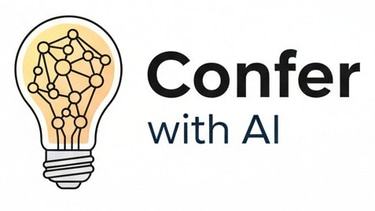Take a look at some case studies
AI Novice - Builder - This sample construction company represents a typical profile we see: 6 employees including field crews and office management. With a technology budget of $500 monthly, they had basic Excel and QuickBooks systems but struggled with disconnected manual processes creating coordination bottlenecks.
Try out an AI Strategic Guide
One of the benefits of the AI Opportunity Overview is you get your very own guide. If you're familiar with a Custom GPT, this is similar—it pairs your company data with Claude (an AI assistant like ChatGPT or Gemini) to give you a personal, tailored experience. This guide walks you through your assessment and explores the options suggested for you. It's designed as a thought partner helping you consider what's presented, staying curious about what makes sense and what doesn't. Since your data comes from a questionnaire and the overview itself is AI-generated, misunderstandings can happen on both ends. That's why you'll find this more of a collaborative exploration than rigid schedules or minute specifics—it helps you think through possibilities rather than telling you exactly what to do.
Try out AI Explorer Guide
Think of this as the "what if?" companion to your Strategic Guide. While your guide gave you a safe, validated path based on your questionnaire responses, the Explorer helps you test those assumptions and push boundaries. It examines the five key factors that shaped your recommendations—why you got certain tools over others, what budget or experience thresholds blocked access to fancier options, and which constraints could actually be wrong. Maybe your team is more change-ready than "cautious adoption" suggests, or you have technical capabilities that weren't captured in the questionnaire. The Explorer helps you challenge these assumptions through questions and scenarios, then shows you what becomes possible if those constraints shift. It's not about abandoning your original plan—it's about discovering whether faster paths or more sophisticated tools might actually fit your reality better than the assessment predicted.
AI Advancing - Realtor - This sample residential real estate brokerage represents a typical profile we see: 6 employees including broker/co-owners, senior realtor, buyer agents, and office assistant. With a technology budget of $500-750 monthly, they had comprehensive cloud-based systems including enterprise MLS and professional Dotloop but struggled with coordination across multiple platforms and manual communication management.
AI Exploring - Property manager - This sample property management company represents a typical profile we see: 6 employees including Owner/CEO, Office Manager, Property Managers, Maintenance Coordinator, and Office Admin managing residential properties. With a technology budget of $2,000-3,000 monthly, they had comprehensive cloud-based systems including Buildium, QuickBooks Online, and Google Workspace but struggled with disconnected manual processes that created workflow bottlenecks between their digital property management software, paper files, and spreadsheet tracking.
AI Emerging - Non profit/ Church This sample community church represents a typical profile we see: 8 ministry-focused staff including pastoral leadership, office administration, and specialized program managers. With a technology budget of $500-750 monthly, they had Google Workspace integration and Planning Center subscription but struggled with disconnected systems creating coordination inefficiencies.
